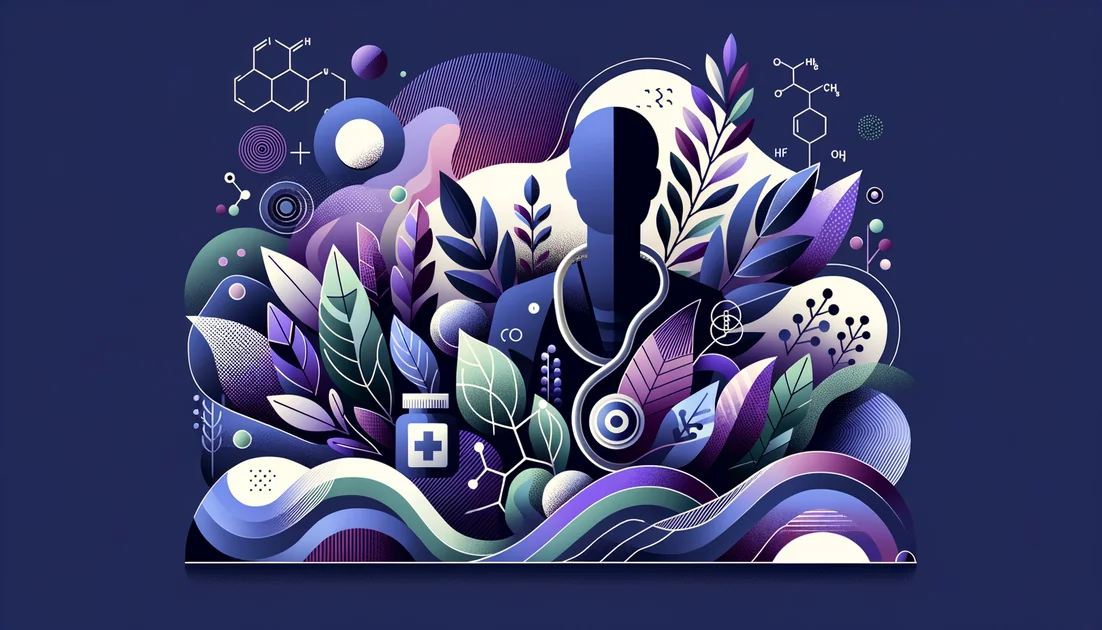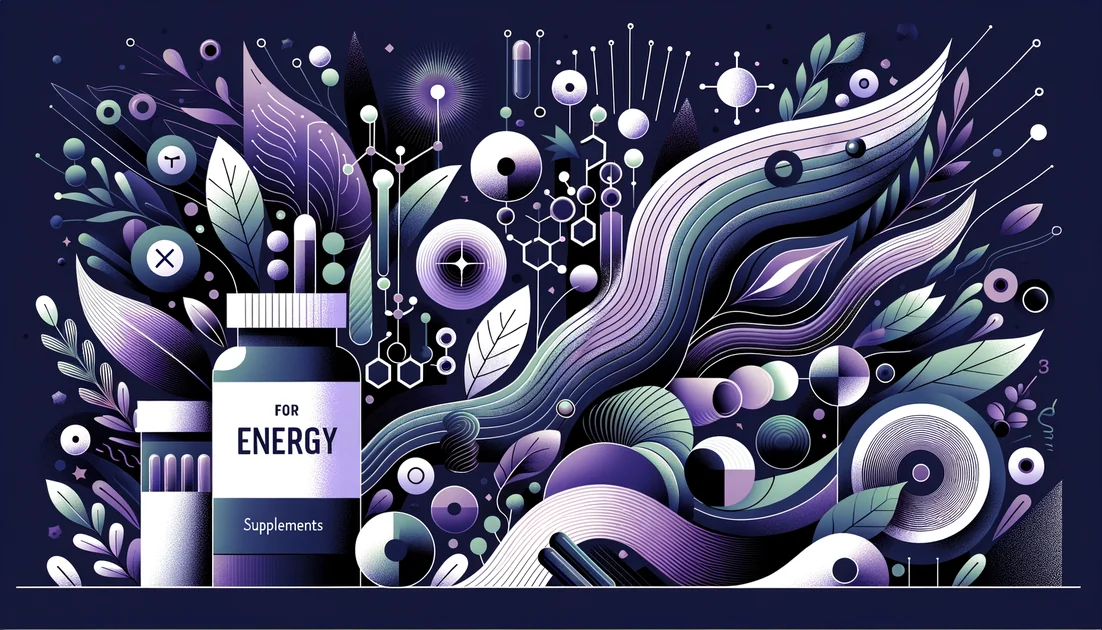
Prairie Panacea, Airplane Colds, and a Hidden Microbiome: The Echinacea Plot Twist
On a dusty Nebraska afternoon in the late 1800s, an exuberant folk doctor allegedly offered to prove his remedy by letting a rattlesnake bite him—and then dosing himself with echinacea. The tale was reprinted by Eclectic physicians and helped launch a prairie wildflower into medical fame. Whether or not the stunt happened exactly as told, it captures echinacea's enduring paradox: beloved in practice, debated in trials, and now—surprisingly—reshaped by the bacteria that live inside the plant itself. [2][3]
- Evidence
- Promising
- Immediate Effect
- No → 2–8 weeks for prevention; during first week for acute support in some studies
- Wears Off
- Likely within days to a few weeks after stopping
From plains medicine to pharmacy counters
Long before supplement aisles, Plains tribes chewed roots, made poultices, and used echinacea for pain, throat troubles, and bites. Eclectic physicians in the late 19th and early 20th centuries then championed it in American clinics, and an Eclectic specimen of Echinacea angustifolia still sits in the Smithsonian's collection—a snapshot of a moment when a prairie plant was mainstream medicine. [1][3]
The cold controversy
Fast-forward to modern trials and you meet contradiction. In 2005, a tightly controlled rhinovirus "challenge" study in the New England Journal of Medicine found no benefit from defined E. angustifolia root extracts. As lead author Ronald Turner later put it, "Our study found no evidence for an effect of echinacea on common cold illnesses." [4][5] A 2014 Cochrane review surveyed 24 controlled trials and concluded there might be a small preventive effect for some products, but results were inconsistent and treatment benefits were unconvincing. [6] And yet, other studies nudge the story. A 4-month, 755-person randomized trial of a standardized E. purpurea extract found fewer virologically confirmed colds—especially from enveloped viruses—among those who took echinacea, with safety similar to placebo. [7] In the peculiar theater of long-haul flights—dry air, close quarters—a placebo-controlled trial reported borderline lower respiratory symptom scores with echinacea started before and during travel. [8] In children, a 2021 randomized, blinded study found that preventive echinacea cut respiratory infections, complications like ear infections, and antibiotic use, while shortening fever days. [9] If you're feeling whiplash, you're not alone. The cast changes (species, plant parts, extraction), the setting changes (lab challenge vs. real life), and so do the outcomes measured. The plot doesn't resolve easily—but it deepens.
The twist: cannabinoid locks and hitchhiking bacteria
When you peek inside the plant, the story becomes more intelligible. Certain lipophilic compounds—alkylamides—look and behave a bit like our own endocannabinoids. In immune cells, they appear to fit CB2 receptors (think: a lock on the "inflammation patrol" doors), nudging them in ways that can both tone down an overzealous response and, in other contexts, rouse defenses. Early mechanistic work suggested these alkylamides tweak the signal cascades that decide how much inflammatory "alarm" gets broadcast. [10] Then researchers stumbled on a bigger twist: a notable share of echinacea's macrophage-stimulating punch comes not from plant cells at all but from the bacteria that live within the plant tissues. In other words, the plant's resident microbes can be the unseen co-authors of its immune effects. NCCIH-supported work shows that differences in the plant's bacterial passengers—and even the soil that shapes them—change how vigorously extracts wake up our innate defenders. In greenhouse and field samples, more organic-rich soils shifted the plant microbiome and increased immune-activating activity in vitro. [11][12] As one investigator put it when their paper won an innovation award: "For over 30 years, scientists..thought that the active ingredients were plant-derived polysaccharides. This paper shows that it's the bacteria living inside the plants." [13]
Why quality and identity matter
If activity varies with species, plant part, extraction, and even the plant's microbiome, then what's in the bottle matters. The American Botanical Council's Botanical Adulterants Prevention Program recently flagged labeling and identity issues in parts of the echinacea supply chain. "A native American medicinal plant, echinacea is one of the most popular herbs used therapeutically in North America," ABC's Mark Blumenthal noted, adding that the new bulletin is meant to help set proper identity specs and keep adulteration at bay. [14]
A cautionary sidebar
Echinacea has a strong safety record in trials, but like all botanicals it isn't for everyone. Rare allergic reactions—including anaphylaxis—have been reported, particularly in people with atopy or sensitivity to the daisy family. Liver injury is uncommon; LiverTox notes overall good tolerance in studies, yet case reports exist, including a patient whose short course preceded autoimmune-like hepatitis. If you're immunosuppressed or managing liver disease, professional guidance is wise. [15][16][17]
How people make it work
What do the better trials have in common? Standardized E. purpurea preparations taken consistently through an exposure window. In adults, prevention was tested over about four months, sometimes with dose bumps during acute symptoms. In kids, a chewable E. purpurea formulation used for two two-month blocks reduced infections and antibiotics. Travelers started days before boarding. Choose products that state species and plant parts, are standardized to alkylamides, and come from brands with third-party quality testing—those details help line up with what was studied. [7][8][9][14]
The horizon: colds, coronaviruses, and standardization
In the lab, one E. purpurea preparation inactivated several coronaviruses—including SARS-CoV-2—on direct contact, and a small, open, randomized study during the pandemic suggested fewer viral detections and lower loads with preventive use, though confirmatory blinded trials are needed. More broadly, the field is inching toward standardization not just by plant chemistry but by the plant's microbial "signature," and toward clarifying when CB2-active alkylamides add meaningful benefit. That's the next chapter this prairie flower has earned. [18][19][10][11][12]
"Our study found no evidence for an effect of echinacea on common cold illnesses." — Ronald Turner, MD, NEJM trialist, reminding us that product, dose, and design matter. [5]
"A native American medicinal plant..one of the most popular herbs..The new BAPP echinacea bulletin is a useful quality control resource.." — Mark Blumenthal, on why identity and integrity underpin outcomes. [14]
Key takeaways
- •Evidence is mixed: a 2005 rhinovirus–challenge RCT with defined E. angustifolia found no treatment benefit, while broader reviews suggest only small preventive effects for some products.
- •A 2014 Cochrane review of 24 trials reported possible modest prevention with certain echinacea preparations, but inconsistent results overall and little support for treatment once sick.
- •One 4-month RCT in 755 adults using standardized E. purpurea showed fewer virologically confirmed colds—especially from enveloped viruses—with good safety reporting.
- •Best use case is prevention during high-exposure periods (e.g., travel, school season) using a standardized E. purpurea extract over weeks, started before exposure and kept consistent.
- •Practical timing: begin days before flights or at the start of cold season; some trials increased doses briefly during acute symptoms.
- •Cautions: avoid if you're allergic to Asteraceae (ragweed, chrysanthemums, marigolds); rare severe allergies and rare liver injury have been reported; consult a clinician if on immunosuppressants or with liver disease.
You might also like
Explore more of our evidence-led investigations, comparisons, and guides across every article style.

Nature's Answer
Nature's Answer: testing-forward heritage extractor with a fixed FDA stumble and only modest transparency

Uridine 5'-Monophosphate (UMP) vs Triacetyluridine (Uridine Triacetate, TAU)
Pick UMP for everyday, lower-cost stacking with DHA/choline; pick TAU if you specifically need maximum systemic uridine delivery and have medical oversight. Evidence for outcomes favors UMP-containing formulas; TAU wins on bioavailability. [6][7][1][2]


Turmeric (Curcuma longa) / Curcumin
Morning light catches a bowl of saffron-yellow paste as aunties circle a bride, dabbing turmeric on her cheeks; across the world, a rheumatology clinic weighs a patient's options for knee pain. How did the same golden powder travel from wedding ritual to clinical conversation—and what does the science actually say?


Tocotrienols
The stealthier cousins of vitamin E—built with springy tails that move differently in cell membranes and behave differently in your body.


